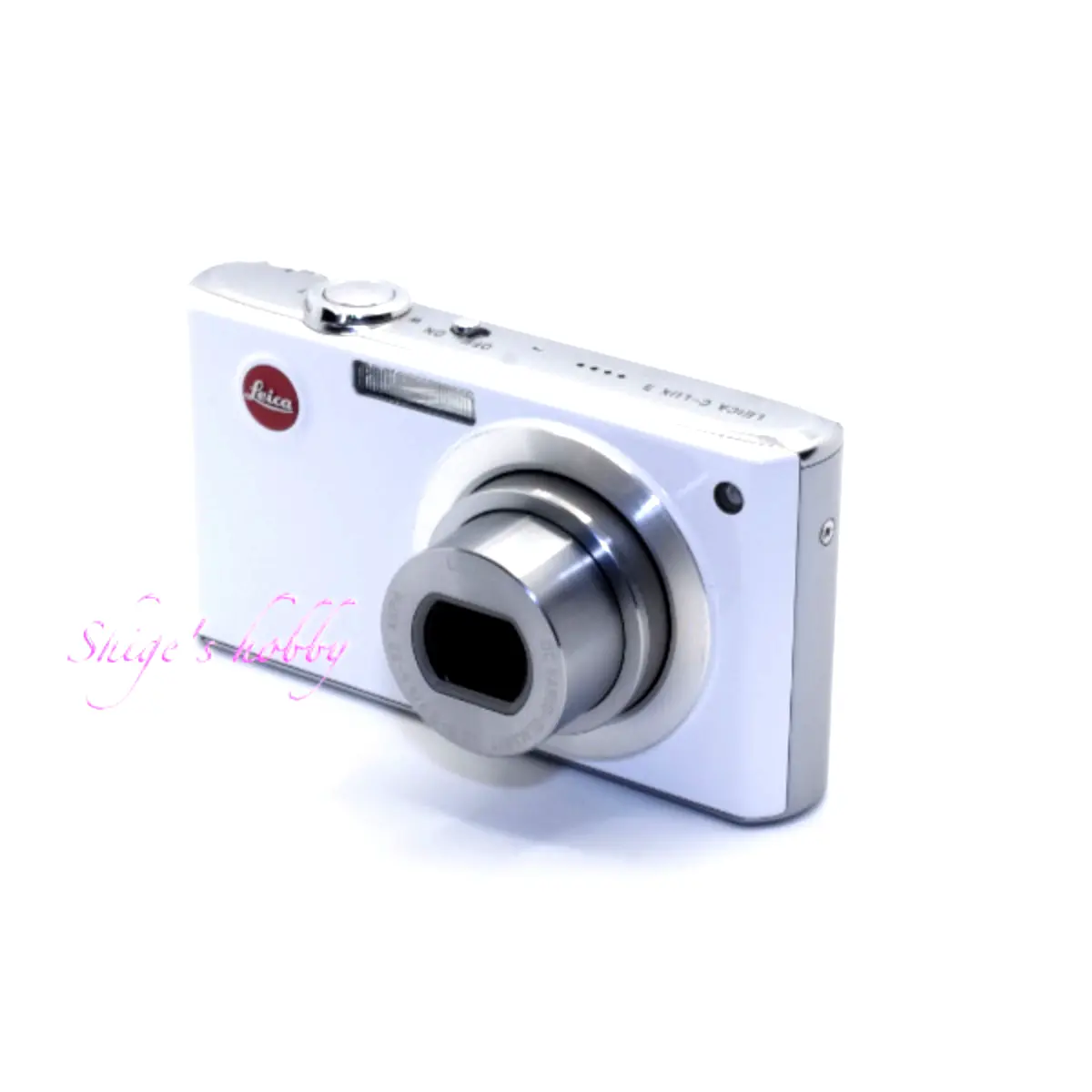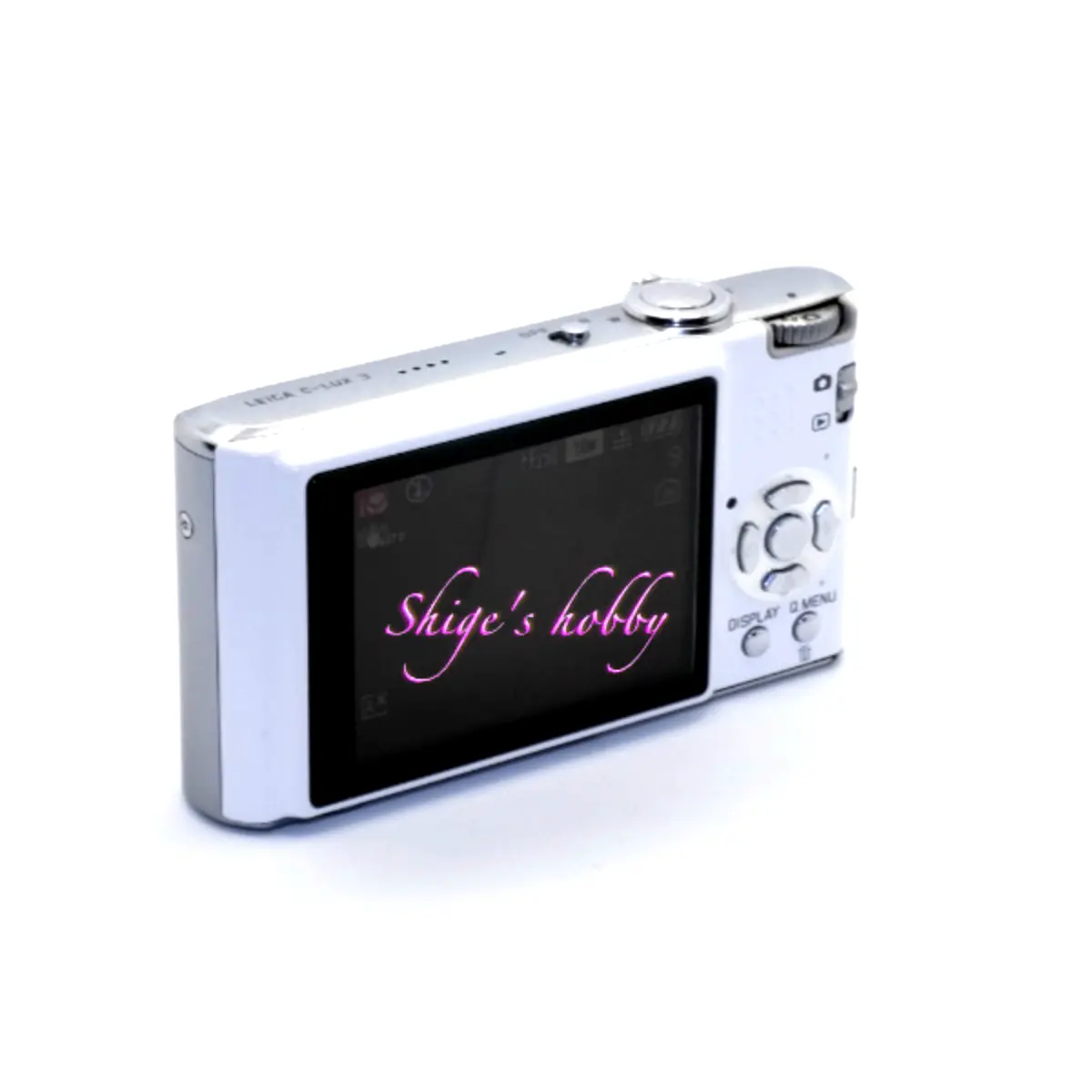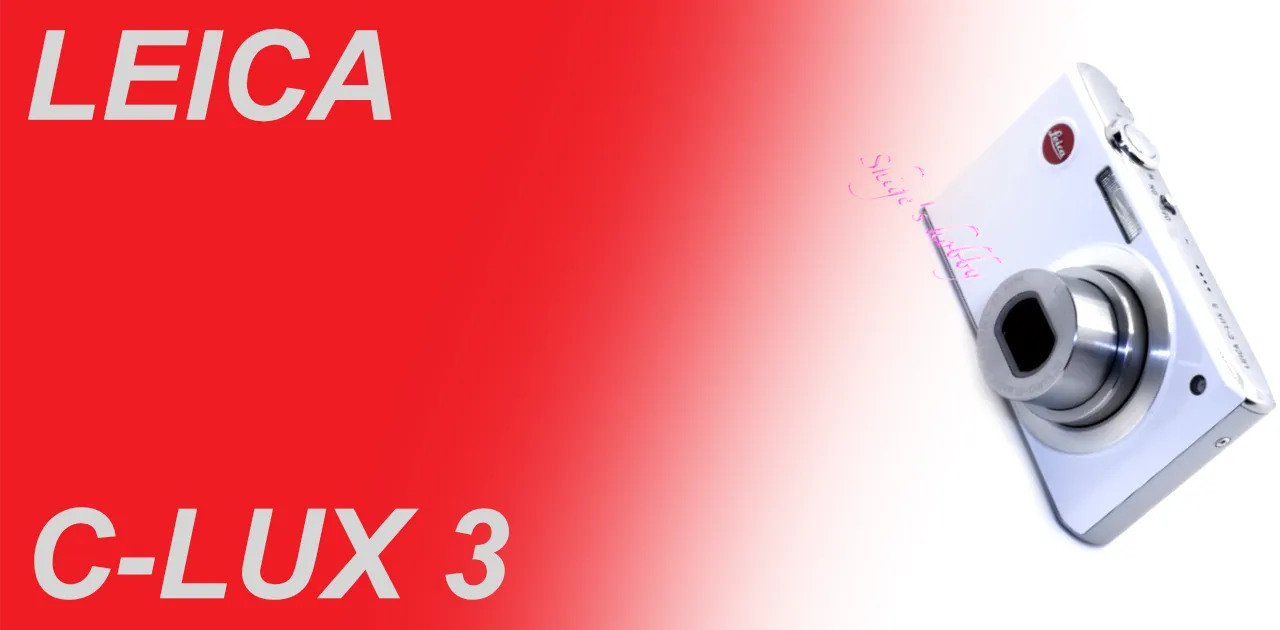Last updated on 2025-10-26
This article is a review and photo examples using the LEICA C-LUX 3 compact digital camera, which was released in 2008 and has 10 megapixels, a 25-125mm zoom, and a 3-inch LCD screen.
- Please see the disclaimer regarding advertising here.
- Italicized links in the text are advertisement links that take you to other sites.
Table of contents

Gallery
Review


1.Overview
The LEICA C-LUX 3 is a compact digital camera released by Leica in 2008.
Leica’s white-bodied cameras have an elegant impression, and the C-LUX 3’s paint job in particular is particularly beautiful among compact digital cameras, hence the title “Beautiful White.”
The camera’s detailed specifications are listed in the table, but the main specifications can be summarized as follows:
- The image sensor has 10 megapixels.
- The lens is a Leica DC VARIO-ELMARIT lens.
- Seven elements in six groups (four aspherical lenses).
- Built-in optical image stabilization (Mega-OIS).
- Focal length: f=4.4-22mm / F2.8 (wide-angle) to F5.9 (telephoto).
- 35mm equivalent: 25mm-125mm.
- Supports up to 32GB SDHC cards.
- Battery: BP-DC6.
- Body colors: black and white.
This camera is an OEM product of Panasonic, based on the LUMIX DMC-FX37.
2.Usability
The LEICA C-LUX 3 offers image quality worthy of a 2008 compact camera. It’s good in bright, low-ISO conditions, but noise becomes apparent in darker conditions at higher ISO settings. While it does have image stabilization, it’s not particularly effective, so casual one-handed shooting can result in blurred images. To minimize camera shake, you’ll need to hold the camera firmly.
The Leica C compact camera series features a simpler exterior, eliminating the somewhat conspicuous design accents of the original Panasonic. The customary red badge asserts the LEICA presence. The glossy white body of this model is very stylish.
The resulting image is the same lens configuration, but the sensor size and focal length are different, resulting in a new design. However, perhaps due to the increased focal length, distortion can be noticeable at the wide-angle end depending on the subject. However, since this isn’t a camera that requires precise results, it’s not particularly noticeable in general use.
The C-LUX 3 is the same camera size as its predecessor, the C-LUX2, but its focal length has increased, from 25mm at the wide-angle end to 125mm at the telephoto end, providing a 5x zoom that’s sufficient for a compact camera.
The focusing distance is 1cm to infinity at the wide-angle end and 1m to infinity at the telephoto end, making it suitable for table photos such as food.
What makes the C-LUX3 so appealing is the perfect focal length.
I used its successor, the LEICA C, but I rarely zoomed all the way to the telephoto end of 200mm for general snapshots, and even with the image stabilization, even the slightest vibration would result in blurry photos, so I never actively used the telephoto end.
The slim body, equipped with the slim BP-DC6 battery adopted in the C-LUX2, fits easily in a pocket. Since this BP-DC6 battery is a different model number and is used in many models, it’s also appreciated that there are plenty of compatible products on the market.
The locking tab on the SD card in this camera’s card slot can sometimes get caught in the card slot. When this happens, the SD card will not come out. If this happens, instead of trying to pull it out with force, fold a thin, strong piece of paper into an L or U shape and insert it into the gap between the card slot and the SD card, covering the locking tab with the paper, and the card will then come out.
I have experienced the same problem with the C-LUX3.
It seems that all Panasonic digital cameras from this era are prone to this problem. The SD card slot is a separate unit, and you cannot remove the card by simply disassembling the camera. I think that clamping the card in the gap mentioned above is an effective way to remove it.
To prevent the card from getting caught, I cover the locking tab on my SD cards with thin, strong mending tape.
3.Summary
In conclusion, to sum up the LEICA C-LUX 3, it is the last camera in the C-LUX series, and as subsequent C-series cameras would feature higher magnification zooms and electronic viewfinders, this would be the last compact digital camera with a standard focal length.
For a compact digital camera, its 10 megapixels and 5x zoom with a focal length of 25-125mm provide sufficient performance for everyday photography.
Specifications, considerations, etc.
Both the C-LUX and D-LUX series are compact digital cameras, but the C-LUX line is simple and stylish, while the D-LUX line features bright lenses and is positioned as a tool for photography enthusiasts.
The white C-LUX3 model is a color that was not available in the film camera era and was adopted with the advent of digital cameras, with the C-LUX3 being the pioneer of this color trend.
Since then, white has been used on cameras such as the LEICA M8, LEICA M9, LEICA M10-P, LEICA X, LEICA X2, LEICA Q, Sofort, and Sofort2, and of these, only the C-LUX3, Sofort, and Sofort2 were available for regular purchase rather than as limited editions.
Other limited edition models, as of 2025, are commanding premium prices on the used market due to their limited production numbers.
| Items | Value | Note |
| Effective pixels | 10.1-Megapixels | |
| Lens | Leica DC VARIO-ELMARIT 1:2.8-5.9 /4.4-22 ASPH. | 35mm equivalent: 25 to 125mm |
| 撮像素子 | 1/2.33 CCD sensor | |
| Finder | none | |
| Back LCD | 2.5 type | |
| Memory-card | SDHC Card | Supports up to 32GB |
| Battery | BP-DC6 | Compatible Battery RICOH DB-70 Panasonic DMW-BCE10E |
| Size(mm) | Width x Height x Depth 95.8 ×51.9 ×24 | |
| Weight(g) | 147 (Include battery and SD-card) |
- Model history
| Model name | C-LUX 1 | C-LUX 2 | C-LUX 3 | LEICA C typ1122 | C-LUX typ1546 |
| focal length | 28-102 | 28-102 | 25-125 | 28-200 | 24-360 |
| Pixels | 6.37 | 7.2 | 10.1 | 12.1 | 10.1 |
| Sensor | 1/2.5 | 1/2.5 | 1/2.33 | 1/1.7 | 1inch |
| Finder | なし | なし | なし | 内蔵EVF | 内蔵EVF |
| Back LCD | 2.5 | 2.5 | 2.5 | 3.0 | 3.0 |
| Battery | BP-DC4 | BP-DC6 | BP-DC6 | BP-DC14 | BP-DC15 |
| Memory-card | SD | SDHC | SDHC | SDXC | SDXC |
| Release year | 2006 | 2007 | 2008 | 2013 | 2018 |
| Colorカラー | Silver Black | White Black | White Black | Dark red Gold | Navy Gold |
| OEM Model | DMC-FX01 | DMC-FX30 | DMC-FX37 | LF1 | TX2 |
Option
- leather case
Reference links
- C-LUX3 introduction from Impress PC-watch
- DCM-FX37 offical Page
- LEICA C-LUX1・Shige’s hobby
- LEICA C-LUX2・Shige’s hobby
- LEICA C-LUX3・Shige’s hobby
- LEICA C typ112・Shige’s hobby
- C-LUX typ1546・Shige’s hobby
Affiliate links
- Leica R lens・Ads by ebay
- Leica M lens・Ads by ebay
- Leica TL・Ads by ebay
- Leica SL・Ads by ebay

Amazon Prime Sale
Update history
- 2024.04.03
- 2023.05.16


Be First to Comment